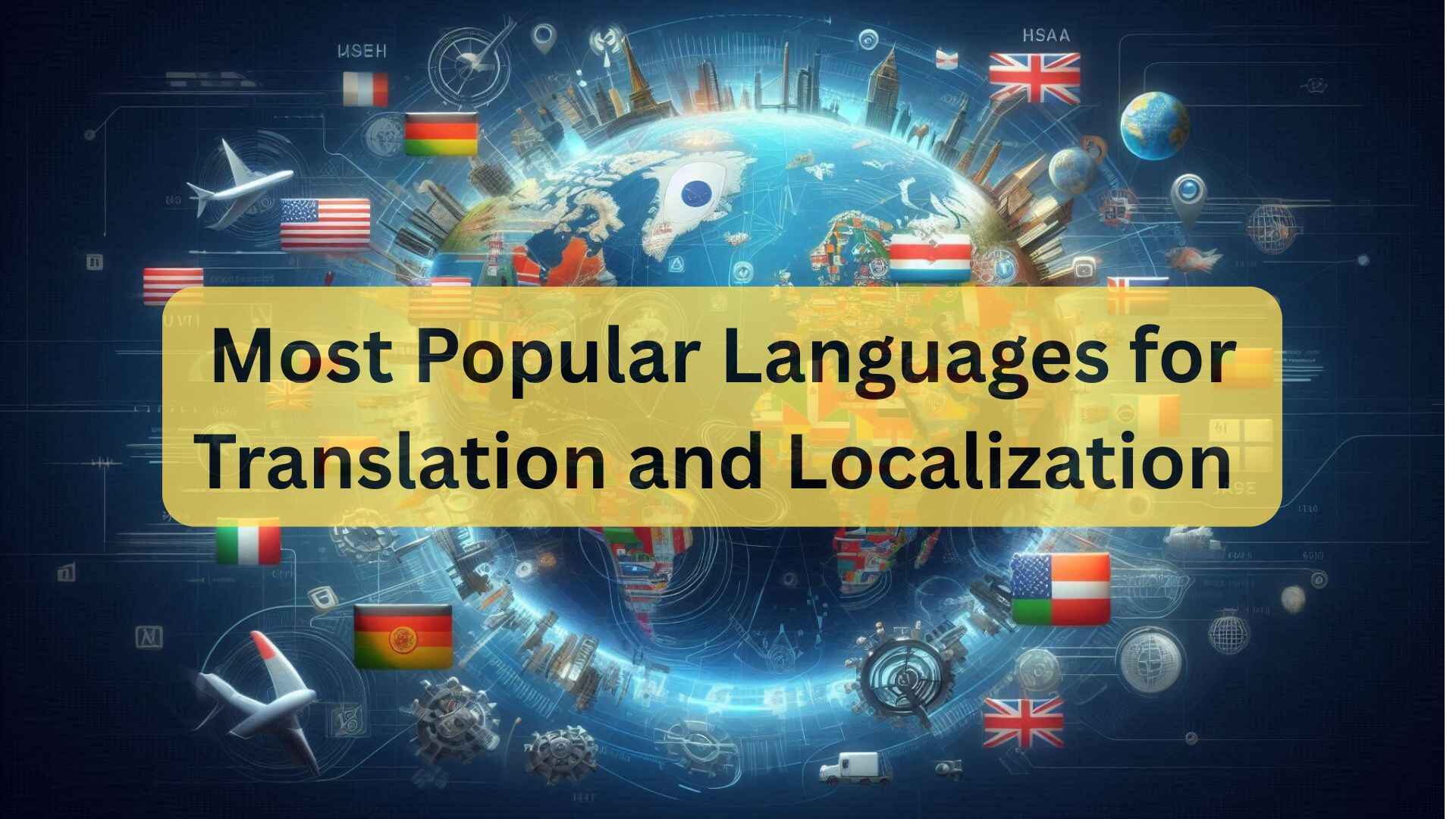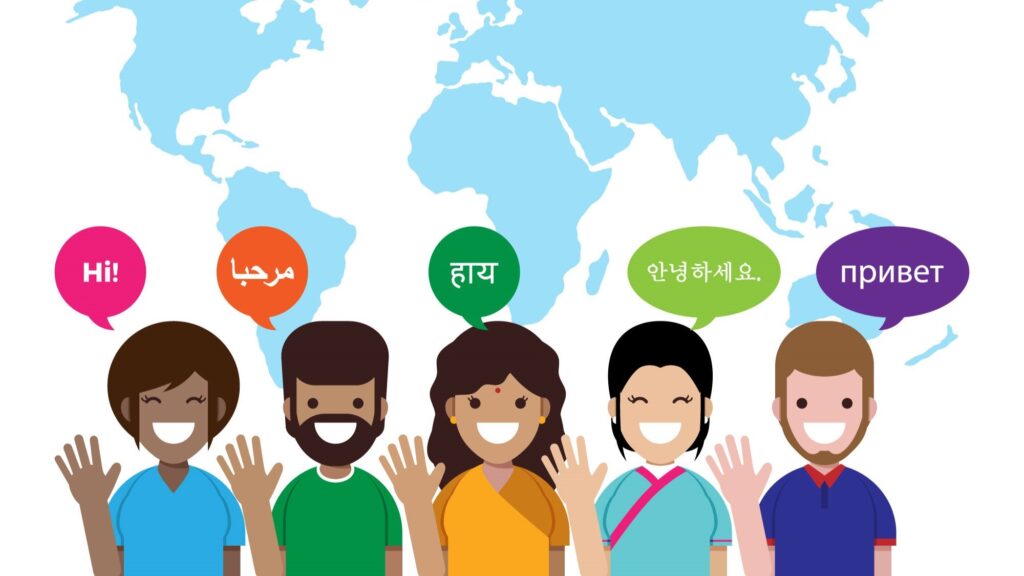
In today’s interconnected digital economy, speaking your customer’s language isn’t a luxury—it’s a necessity. Businesses that invest in translation and localization services can expand their reach, build trust, and increase conversions across international markets. But which languages should you prioritize?
In this blog, we’ll explore the most popular languages for translation and localization in 2025, based on market trends, digital consumption, and economic influence.
Why Language Popularity Matters in Translation & Localization
Choosing the right languages is a strategic decision. The most translated languages often reflect:
- Large speaking populations (native and second-language)
- Strong economic presence
- Widespread internet use
- Cultural or commercial influence
Translating your content into the right language can unlock massive growth, improve user experience, and give your brand a global edge.
Top 10 Most Popular Languages for Translation & Localization
Here are the most in-demand languages in the translation and localization industry in 2025:
1. English
As the global language of business, English remains essential. Even in non-English speaking countries, localizing content into English helps reach international markets, especially in ecommerce, SaaS, and education.
2. Spanish
With over 500 million speakers across Latin America, Spain, and the U.S., Spanish is one of the most popular languages for website and app localization. Spanish localization is vital for brands targeting North and South American markets.
3. Chinese (Mandarin)
China’s booming economy and digital space make Mandarin a top choice for companies entering Asia. With over 1 billion speakers, it’s a must-have for gaming, ecommerce, and tech platforms.
4. French
Spoken across Europe, Africa, and Canada, French offers access to multiple global markets. It’s a top language for legal, financial, and governmental localization projects.
5. German
As the language of Europe’s largest economy, German is a top priority for automotive, engineering, and manufacturing industries targeting German-speaking audiences.
6. Arabic
Arabic serves over 300 million speakers across the Middle East and North Africa (MENA). Its unique script and right-to-left (RTL) formatting require specialized localization expertise.
7. Portuguese (Brazilian)
Brazil’s thriving online market makes Brazilian Portuguese critical for localization. It’s popular in fashion, beauty, streaming services, and mobile apps.
8. Japanese
Japan is a tech and entertainment powerhouse. Localizing into Japanese is key for anime, gaming, electronics, and consumer brands.
9. Russian
Russian is widely used across Eastern Europe and Central Asia. It’s valuable for businesses in energy, mining, logistics, and education.
10. Hindi
India’s rapid digitization makes Hindi—and other regional Indian languages—a smart choice. With over 600 million internet users, it’s among the fastest-growing markets for localized content.
Emerging Regional Language Trends
Beyond global languages, businesses are also targeting regional tongues for hyperlocal engagement:
- Southeast Asia: Thai, Vietnamese, Bahasa Indonesia
- Africa: Swahili, Amharic, Yoruba
- India: Tamil, Telugu, Bengali, Marathi, Kannada
These languages offer access to niche but growing markets with high conversion potential.
How to Choose the Right Language for Your Business

Not every business needs to translate into 10+ languages. Here’s how to choose smartly:
- Know your audience: Use analytics, sales data, and location targeting.
- Research competition: See which languages your competitors localize in.
- Evaluate demand: Use tools like Google Trends or keyword planners.
- Plan for scalability: Choose languages that offer future growth.
Why Work with Professional Translation Services?
Professional translation ensures more than just word-for-word accuracy. You get:
- Cultural adaptation for each market
- Tone and context optimization
- Technical and industry-specific expertise
- Quality checks and linguistic testing
At VerboLabs, we specialize in localizing content for ecommerce, apps, video, gaming, and more in 120+ global languages.
How VerboLabs Supports Global Brands
VerboLabs provides:
- Native-speaking translators with domain expertise
- Multilingual content creation from scratch or for translation
- End-to-end localization solutions including subtitles, voiceovers, and UI/UX adaptation
- Support for global platforms like Shopify, WordPress, WooCommerce, and Magento
Whether you’re a startup or a global enterprise, we help you speak your customers’ language—accurately and culturally.
Conclusion: Speak the Language of Growth
The languages you choose to translate and localize in can make or break your global success. By focusing on the most popular languages for translation in 2025, you increase your brand’s visibility, user engagement, and international revenue.

Want to translate your content for global reach?
Contact VerboLabs today for customized translation and localization services.
FAQs
English remains the most translated language globally, followed by French, Spanish, and Arabic.
Spanish, French, German, Mandarin, and Hindi are strong choices based on market reach and buyer behavior.
Costs vary by language, project size, and content type. Contact VerboLabs for a custom quote.
Absolutely. Many brands start with 1-2 key markets and scale up as their global strategy matures.



